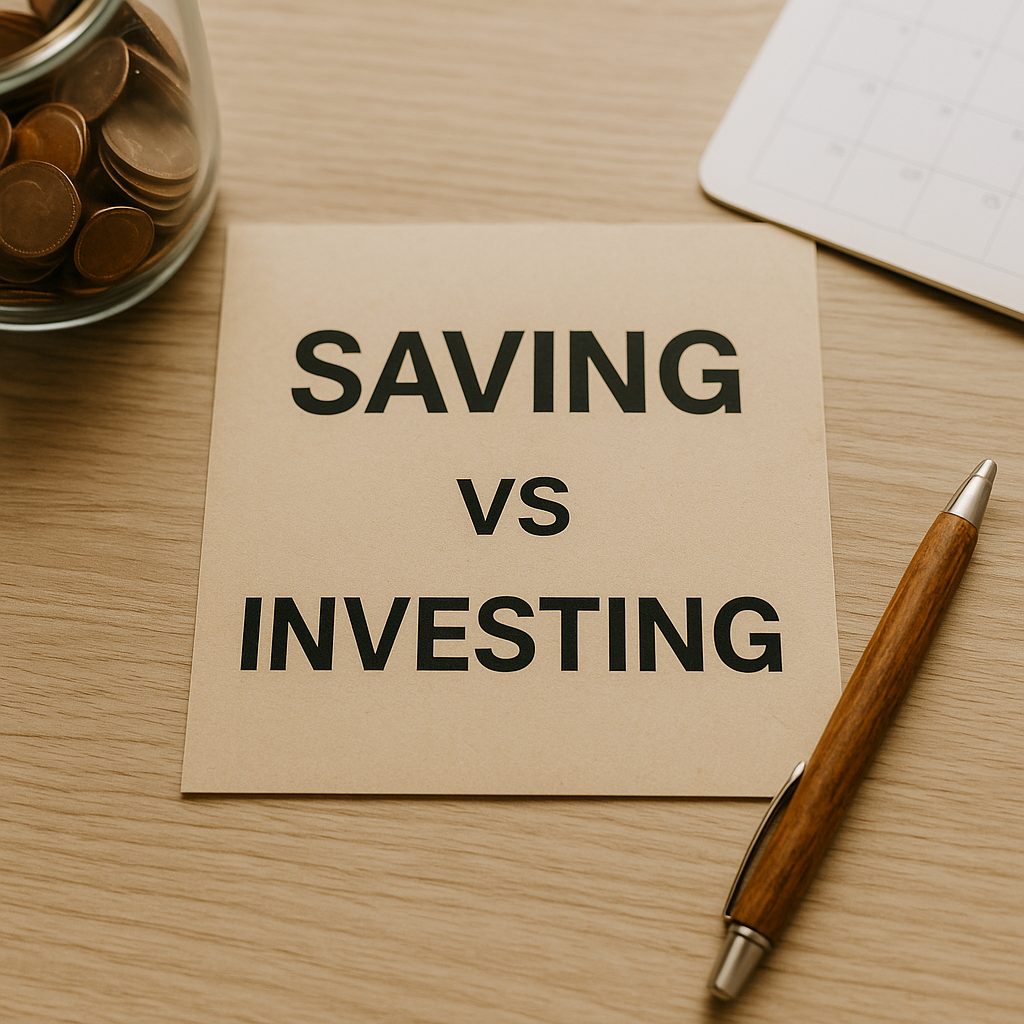Understanding the Difference Between Saving and Investing
When it comes to building a secure financial future for your family, two strategies usually come up: saving and investing. While they may sound similar, they serve different purposes — and knowing when to use each one can make a big difference in your long-term stability and success.
In simple terms:
- Saving is setting money aside in a safe place for short-term needs or emergencies.
- Investing is putting your money to work to grow over time, often with the goal of building long-term wealth.
Let’s explore how each works, when to choose one over the other, and how to use both to benefit your family’s financial future.
What Is Saving?
Saving involves putting money into low-risk, easily accessible places — such as:
- A savings account
- A high-yield savings account
- A money market account
- A certificate of deposit (CD)
The goal is to preserve the money and be able to use it when needed, without worrying about losing it due to market changes.
When Should You Save?
Saving is ideal for:
- Emergency funds (3–6 months of expenses)
- Short-term goals (next 1–3 years)
- Upcoming purchases like a car, vacation, or school fees
- Financial security in case of job loss or unexpected costs
Because the value doesn’t fluctuate, savings are best for peace of mind and accessibility.
Pros of Saving:
- Your money is safe and insured (especially in bank accounts)
- It’s liquid — meaning you can access it quickly
- No risk of loss due to market fluctuations
Cons of Saving:
- Low returns — interest rates often don’t beat inflation
- Doesn’t grow much over time
So, while saving is great for stability, it won’t help grow your wealth significantly in the long run.
What Is Investing?
Investing means using your money to buy assets like:
- Stocks
- Bonds
- Mutual funds or ETFs
- Real estate
- Retirement accounts (like IRAs or employer pensions)
The aim is to grow your money over time — often over 5, 10, or 20 years.
When Should You Invest?
Investing is ideal for:
- Long-term goals (retirement, college funds, buying a home)
- Growing wealth over decades
- Outpacing inflation
You’re trading short-term stability for long-term growth. The value of investments may rise and fall, but historically, markets trend upward over time.
Pros of Investing:
- Potential for much higher returns than saving
- Builds long-term wealth
- Beats inflation when done correctly
Cons of Investing:
- Risk of short-term losses
- Requires patience and discipline
- Not suited for money you need quickly
Investing can seem intimidating, but even small monthly contributions can grow significantly over time thanks to compound interest.
Which One Is Better for Your Family?
The truth: you need both.
Think of saving and investing as two tools in your family’s financial toolkit. Each one serves a purpose — and they work best together.
Use Saving For:
- Emergency funds
- A down payment in the next year or two
- Kids’ school uniforms or annual expenses
- Upcoming trips or gifts
- A buffer for monthly budgeting
Use Investing For:
- Retirement planning
- Building wealth
- Future education funds (5+ years ahead)
- Generational wealth or legacy goals
By saving for now and investing for later, your family stays protected today and grows stronger financially over time.
How to Balance Saving and Investing
Step 1: Build Your Emergency Fund First
Before investing, make sure you have at least 3–6 months of essential expenses saved. This safety net keeps you from needing to pull money out of investments in a crisis.
Step 2: Set Clear Goals With Timelines
Ask: When will I need this money?
- Less than 3 years = Save
- 3–5 years = Consider both (short-term investments or CDs)
- More than 5 years = Invest
Step 3: Automate Both
Set up:
- An automatic transfer to your savings account every payday
- A small recurring investment in an index fund, retirement account, or robo-advisor
Even if it’s just $25 per month, starting now matters more than waiting for the “perfect time.”
Step 4: Review Regularly
Every few months, check:
- Has your savings goal changed?
- Can you increase your investment contributions?
- Are you earning good interest on your savings?
Stay flexible — life changes, and so should your strategy.
What If You Can Only Afford One?
Start with saving — especially if you don’t yet have an emergency fund or predictable cash flow. Once your basics are covered, shift focus to investing, even if it’s small at first.
Think of it like building a house:
- Saving is the foundation (security)
- Investing is the framework and roof (growth)
You need both to feel safe and move forward.
Final Thought: The Smartest Families Use Both
There’s no need to pick sides. Smart family finance isn’t about choosing saving or investing — it’s about knowing when to use each.
Start where you are. Save what you can. Then invest what you won’t need soon. Over time, these two habits can give your family financial freedom, flexibility, and a future you can feel proud of.
